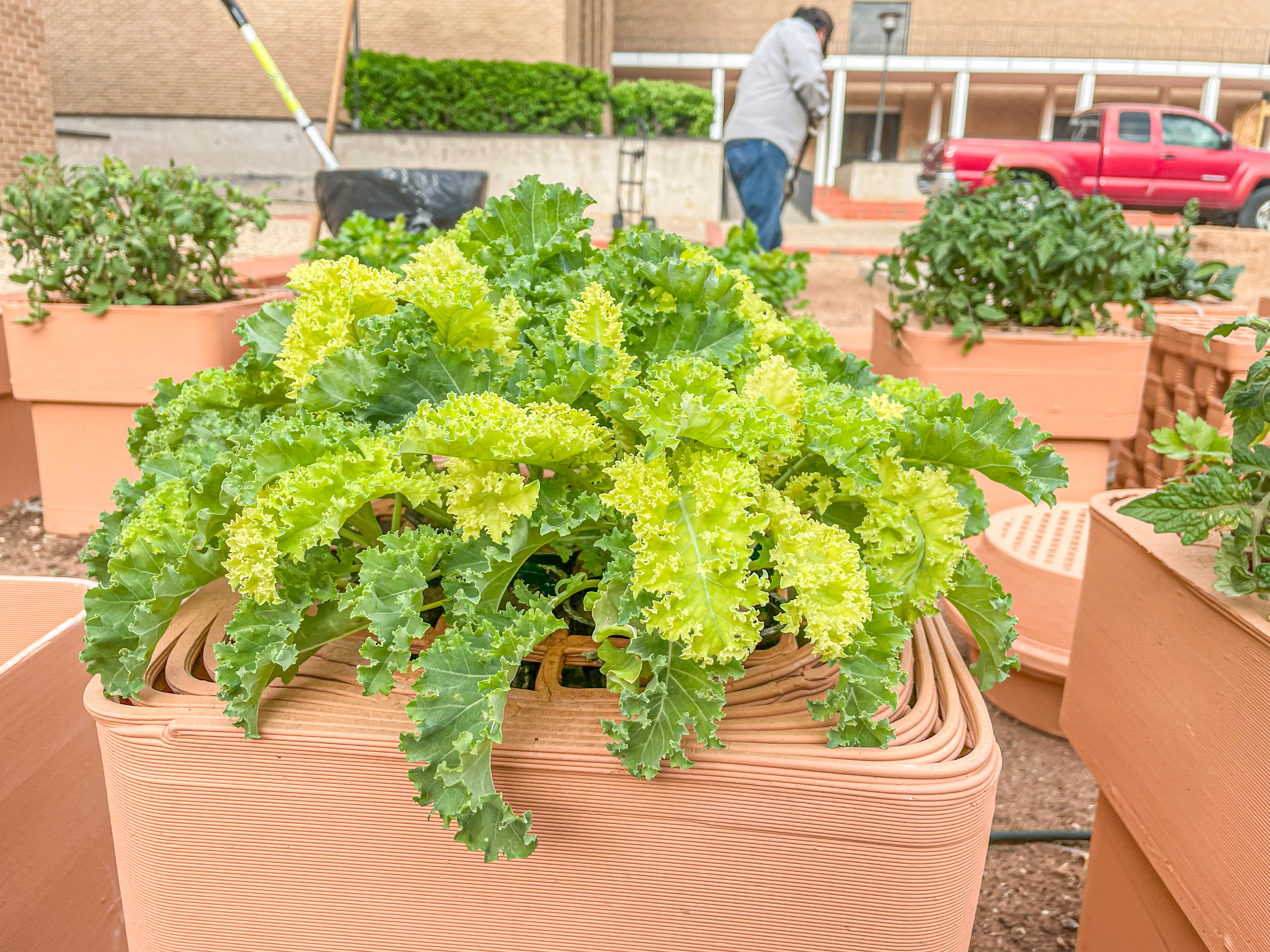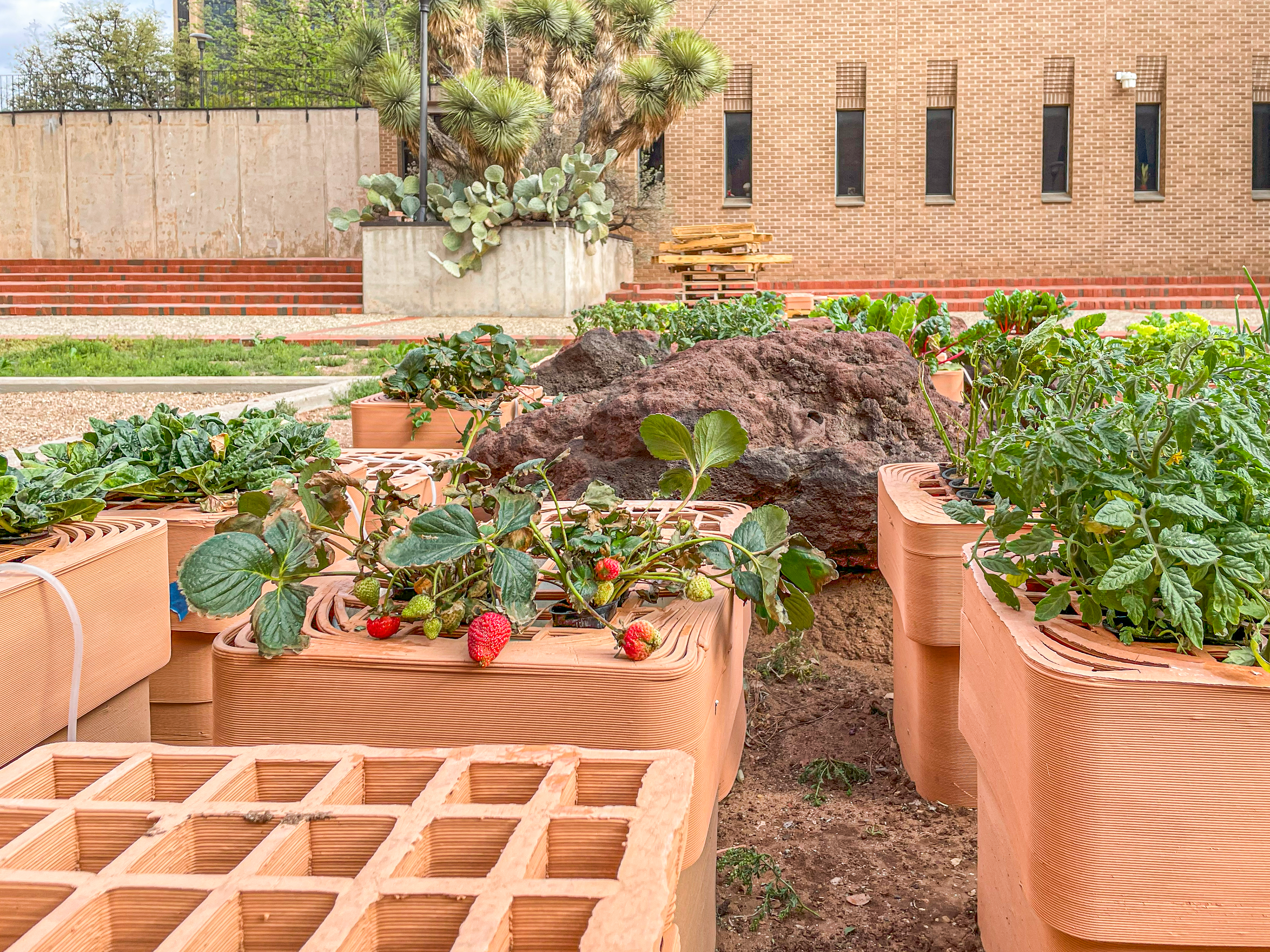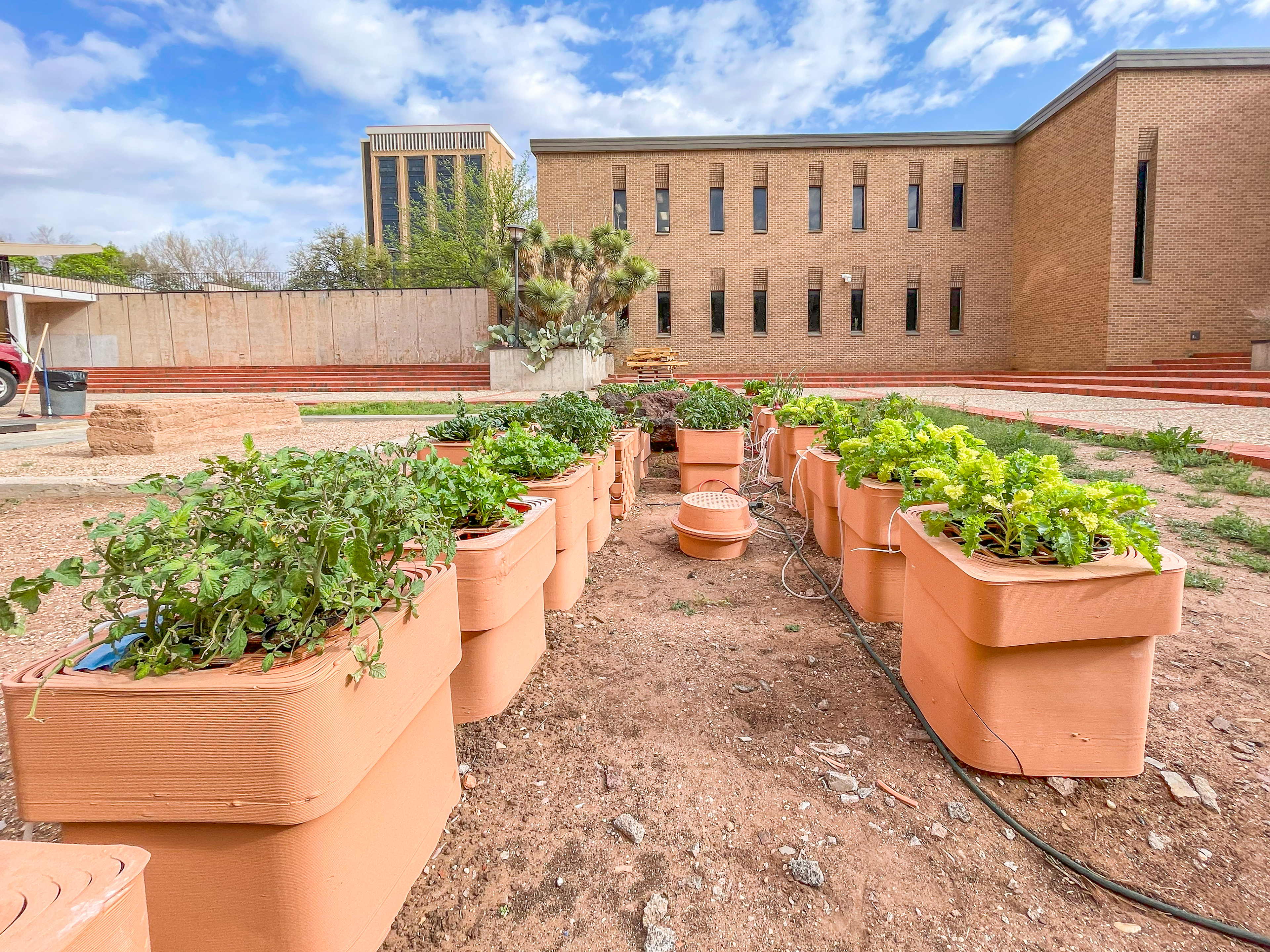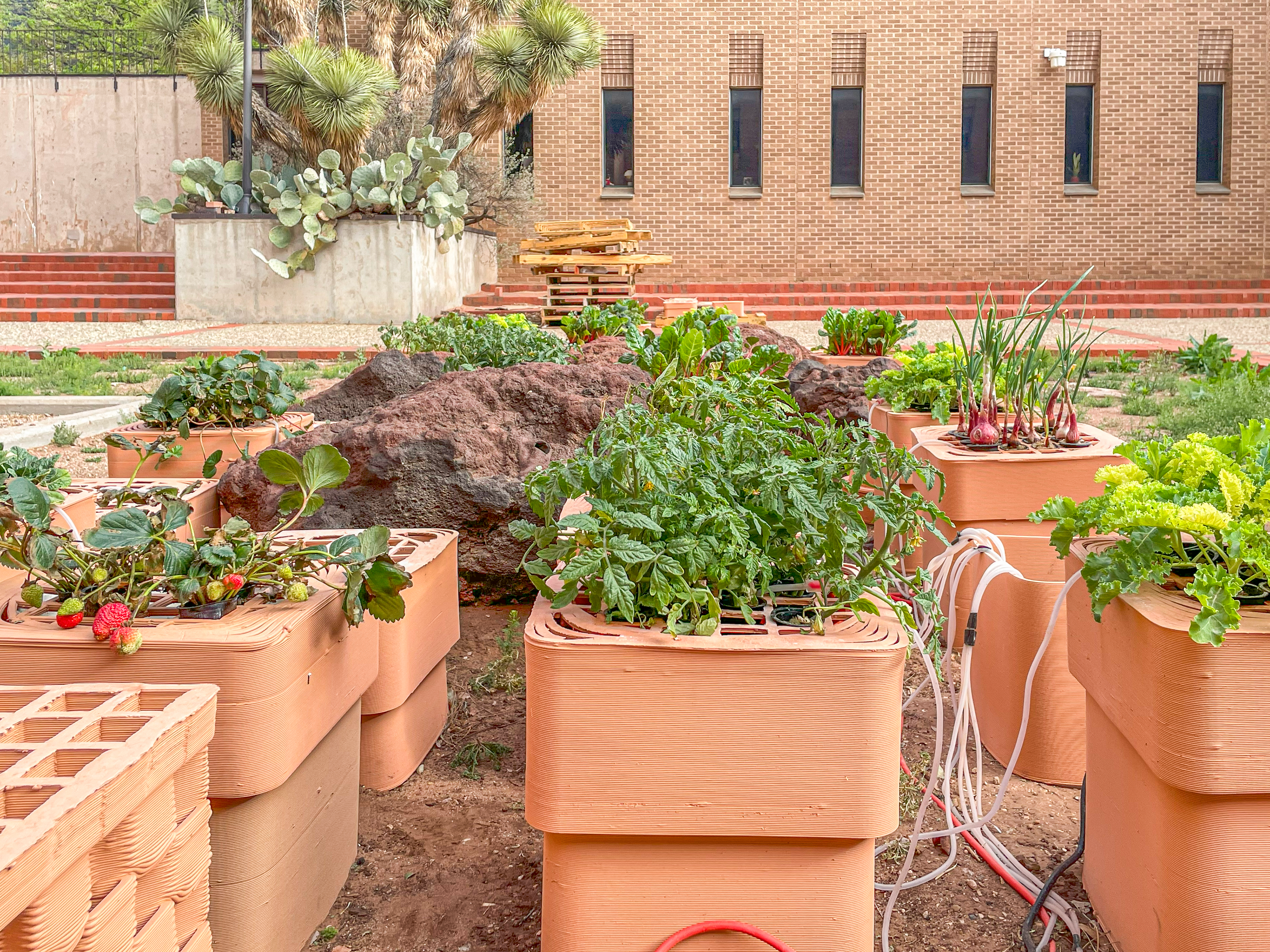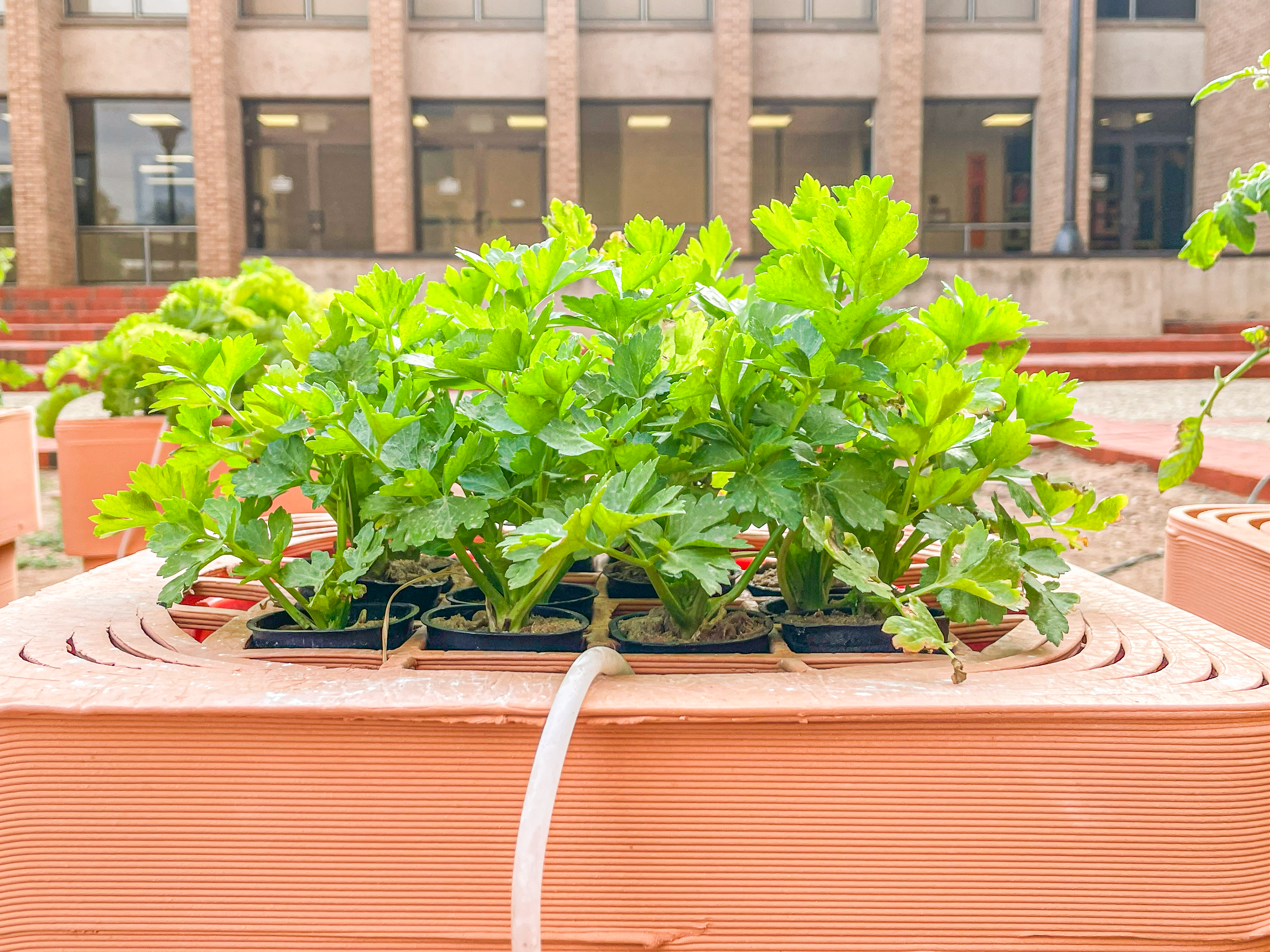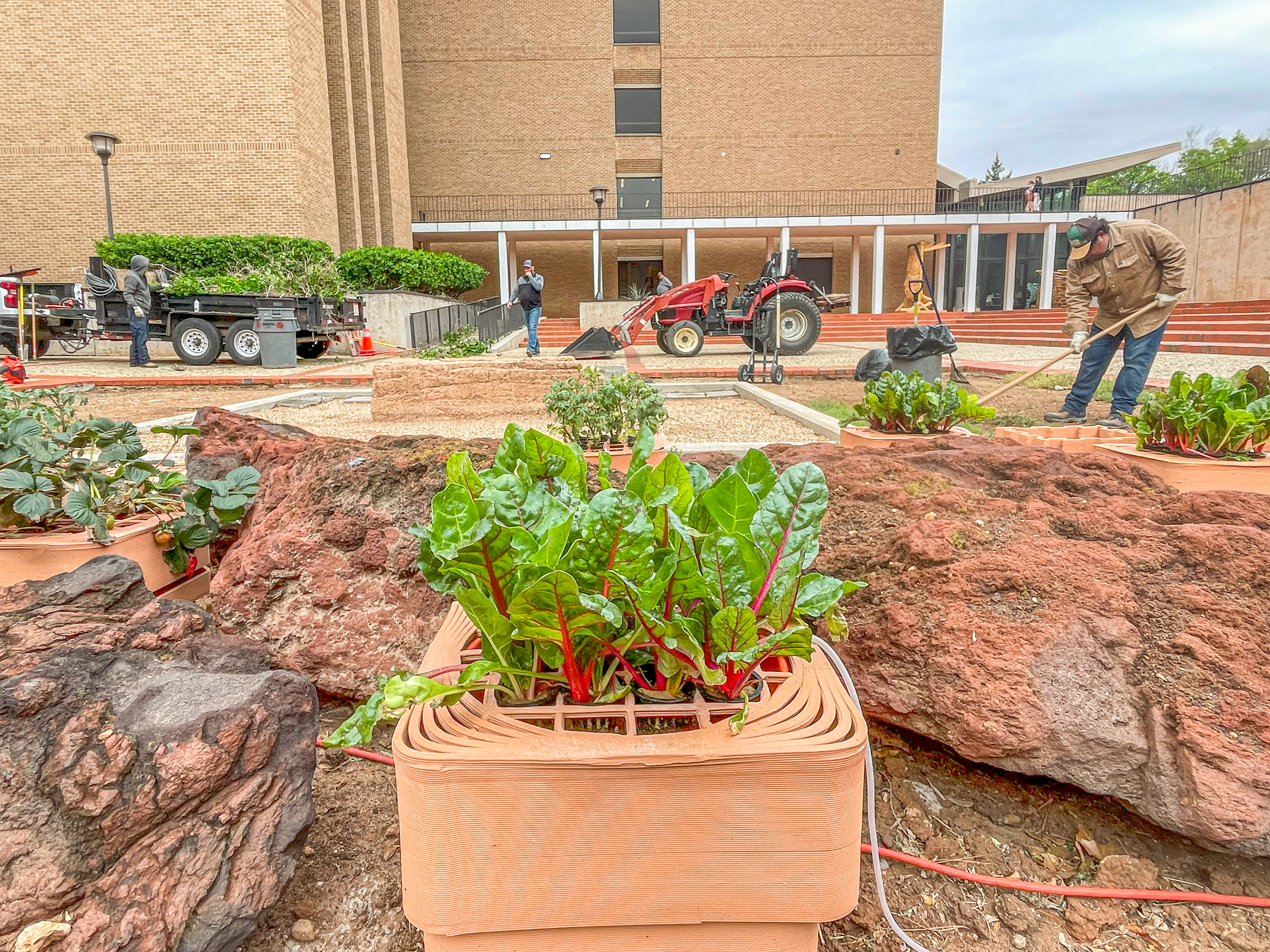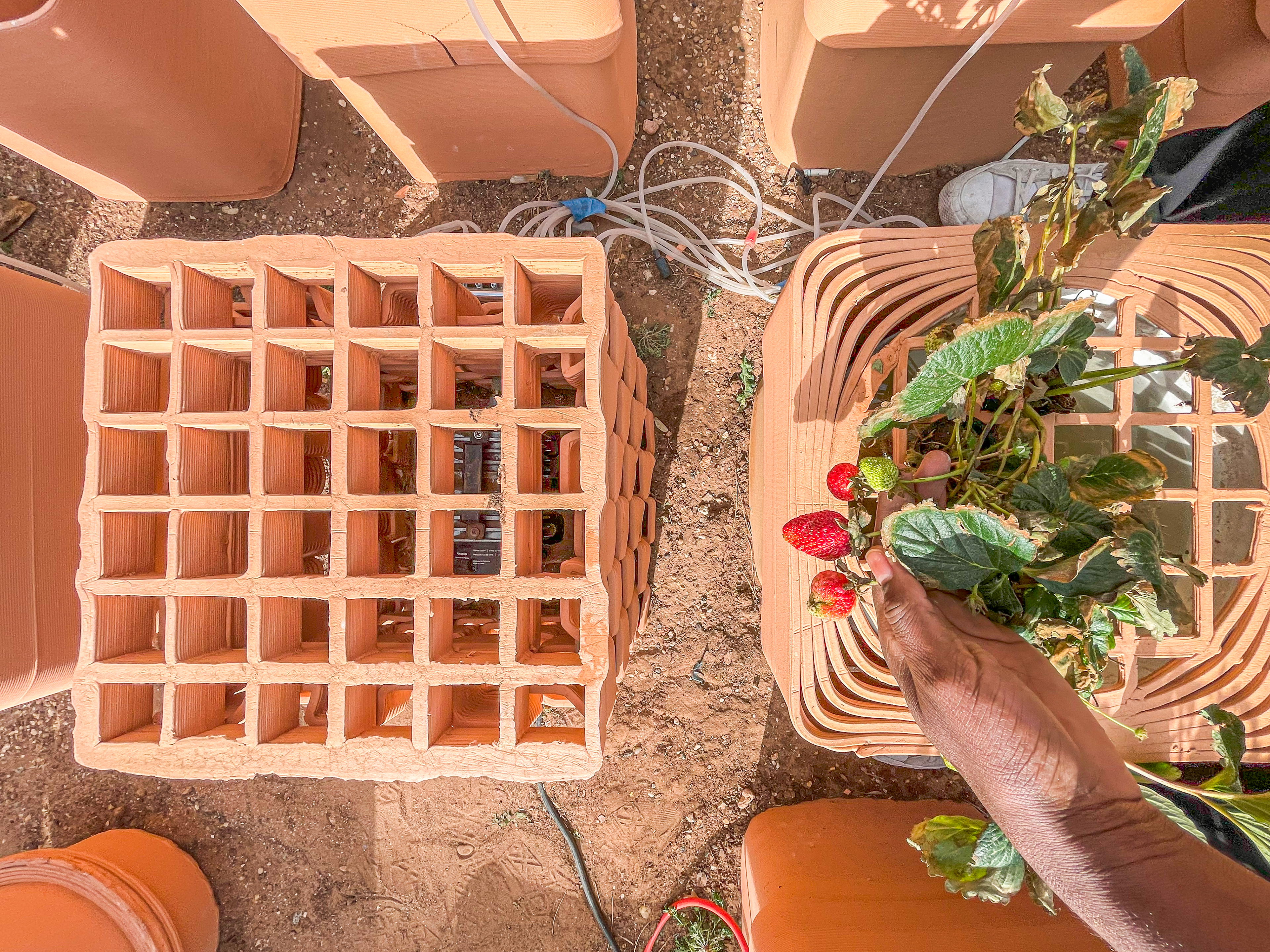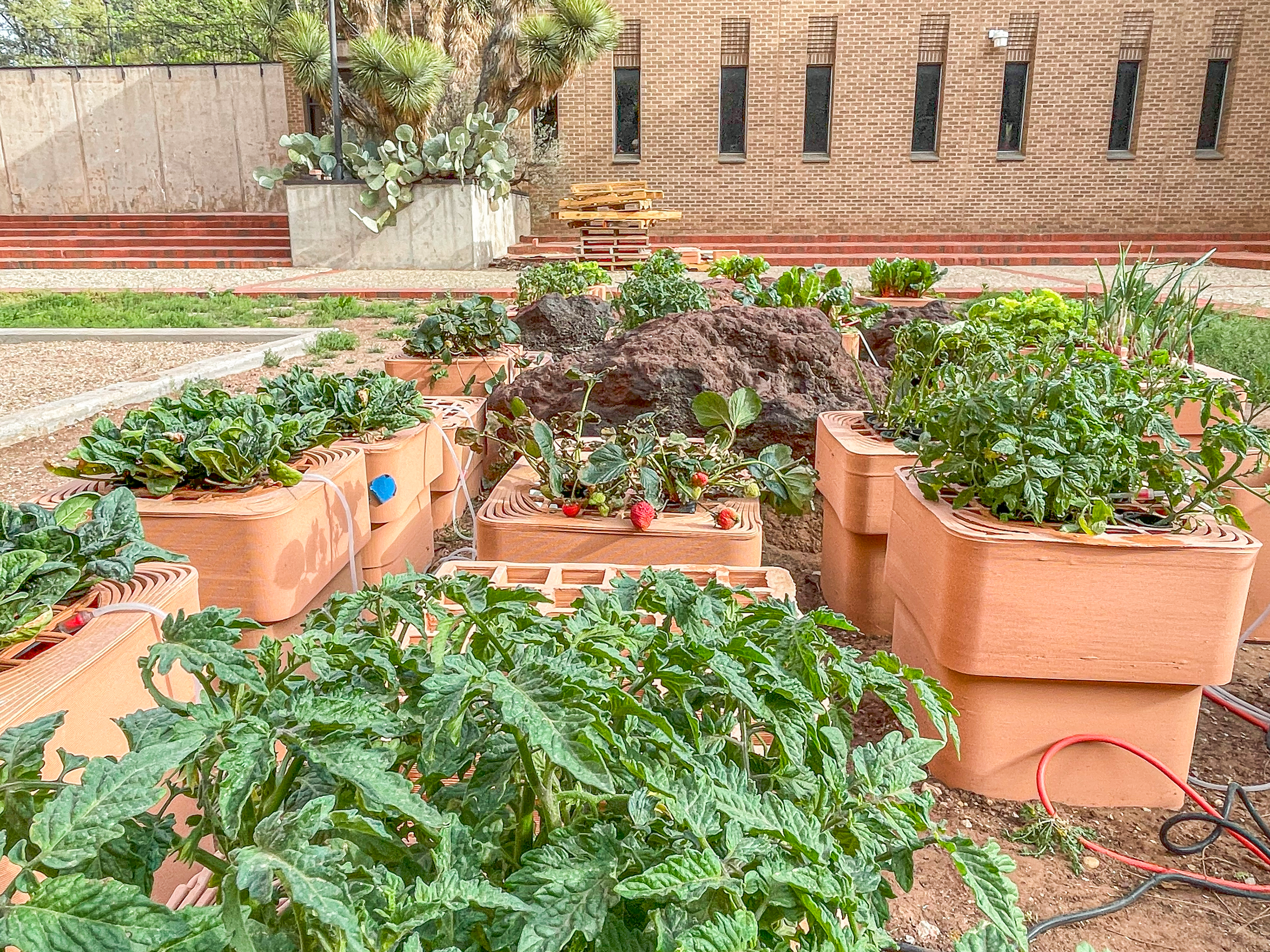ClayPonic V2 is a novel, replicable, deployable, environmentally conscious urban farming solution and landscape architecture proposition. The project elaborates on eco-technology as a framework for the next generation of small and agile micro infrastructures that are inherently ecological and technological. ClayPonic V2 integrates the 'ecology of technics' and the 'technics of ecology' by weaving together a dynamic relationship between the creative practice of clay additive manufacturing and urban farming technologies. ClayPonic V2 develops ceramic substrates suitable for growing plants in a deep-water culture.
ClayPonic V1 multilevel 3D printed ceramic structures
The project enables year-round cultivation with minimal water and nutrient consumption by maximizing plant nutrition assimilation and accelerating growth. The configuration of the model and its soil-free nature significantly reduce risks of soil-borne diseases, pathogens, and pests. The prime objective of this pilot project is to address broader concerns of food deserts in densely urban areas and food insecurity in rural and hinterlands, where water and soil infertility is a challenge. The deployability merit of the model facilitates a seamless placement and integration into the built environment. This revolutionary approach to farming efficiency improves agricultural practices and reduces dependence on chemical pesticides and herbicides, promoting eco-friendly farming principles.
ClayPonic V2 is a model to localize food production and perpetuate food self-sufficiency
ClayPonic V2 demonstrates how contemporary and cutting-edge 3D printing technology is an indispensable instrument for revolutionizing conventional farming methods. By harnessing the power of technology and innovation, this project, the second in a series of technology implementations, integrates machinery, materiality, and ecology, aspiring to create deployable systems capable of addressing pressing challenges while deepening human connection to the natural world.
Deep water culture, working air concept and nutrient uptake
